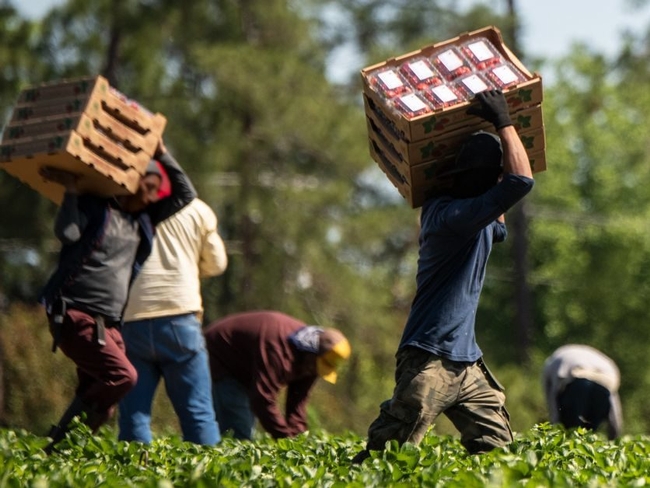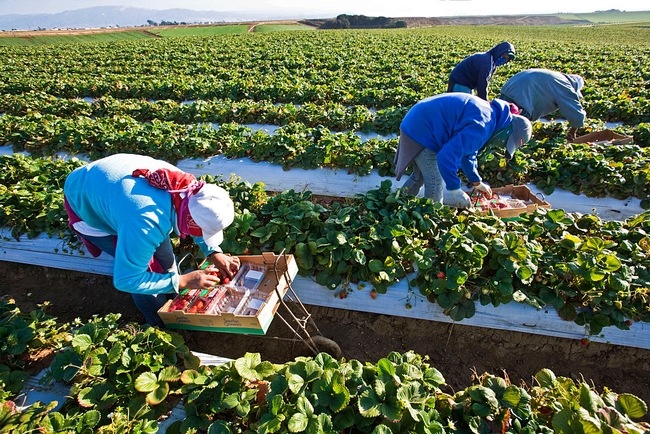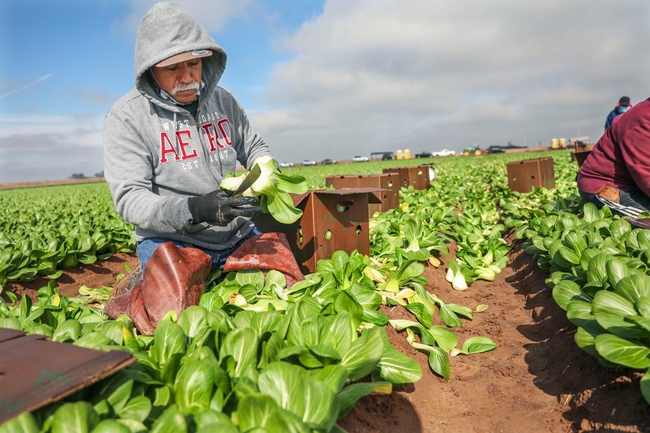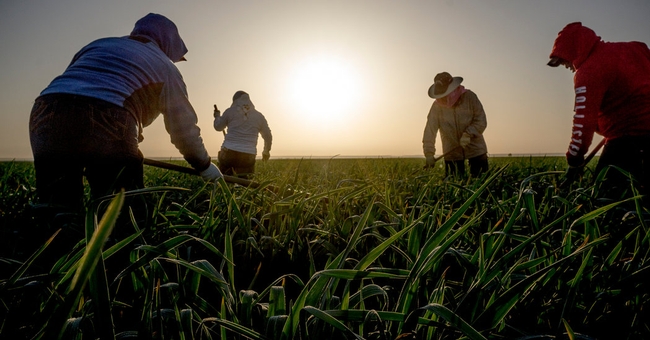The death of a farmworker on May 14, 2005, east of Stockton, California, highlighted the sufferings of day laborers during the summer. María Isabel Vásquez Jiménez, originally from Oaxaca, Mexico, 17 years old and two months pregnant, worked in a vineyard in temperatures above 95 degrees. Her death and that of three other day laborers in previous years led California to adopt the law requiring shade, water and rest to prevent more deaths due to heat stroke.
Teresa Andrews, a community educator at the Western Center for Agricultural Health and Safety at the University of California, Davis, remembers when scientific studies were being done to support the law.
"The study was specifically about how heat affects people,” Andrews said. “There was a group of experts who were visiting various agricultural sites, from Northern California to the border with Mexicali, and were looking at the different tasks that the workers did during the day. This study was done for three years in the summer season."
At the same time, scientists collected data on ambient temperature, humidity and other environmental factors.

The study revealed that even though most of the workers were under 40 years of age, by the end of the day, most of them were dehydrated. When a person is dehydrated, they are exposed to several health problems, including death.
"When the study was going to start, the death of a young farmworker, María Isabel Vásquez-Jiménez, was recorded, and this led Cal/OSHA to start the campaign of shade, water and rest," Andrews said. She adds that the center was an essential part of this campaign since its inception 17 years ago.
Since the initiative was signed into law in 2005 by then-Gov, Arnold Schwarzenegger, every year during the summer, California Division of Occupational Safety and Health and the UC Davis Western Center for Health and Safety in Agriculture have resumed the campaign and offered workshops in Spanish and English throughout the state to raise awareness among workers of their right to receive shade, water and rest if they need it.
Despite these efforts, in the last 12 years, 24-day laborers have died due to heat illness.
"Sometimes when I talk to them directly during training, they tell me they don't drink water because they're afraid they're going to go to the bathroom a lot, that the employer is going to get their attention because they're not working as fast," Andrews says.
Having water for consumption is the right of day laborers. Andrews says drinking water in small amounts is crucial to the farmworker's well-being. She uses simple concepts in her workshops to make farmworkers aware of the importance of always being hydrated.
"We don't have a little light that warns us about the lack of water, but we are thirsty, which is the signal to know that we are close to suffering from heat illness or heat stroke," says Andrews.
The community educator emphasizes the difference between heat exhaustion and heat stroke.
Heat exhaustion is caused when the body loses excessive amounts of water and salt, while in the potentially fatal heat stroke, the body cannot control its internal temperature. Heat stroke is a medical emergency.
The warning signs for heat exhaustion are as follows:
- Fever above 104 degrees Fahrenheit.
- Changes in mental state or behavior include confusion, agitation, and babbling.
- Hot, dry skin or excessive sweating.
- Nausea and vomiting.
- Reddened skin.
- Accelerated pulse.
- Rapid breathing
Symptoms of Insolation/Heat Stroke are:
- Confusion
- Convulsions.
- Fainting.
- Feeling thirsty.
- Intermittent muscle cramps in the extremities and abdomen.
- In insolation, abundant sweating occurs; in heat stroke, sweating ceases, and the skin is dry, hot, and red.
- Dizziness, nausea, and vomiting.
- Strong and irregular pulse.
- Rapid, noisy breathing.
- Body temperature is high.

According to data from Cal/OSHA, every year, at least three or four farmworkers die due to heat stroke.
"People get used to hearing science-based information, and it's meant to help them lead a better quality of life," Andrews says.
The work to create awareness that the Western Center for Agricultural Health and Safety, CalOsha, and UC ANR are doing is critical because the threat of heat stroke is increasing as temperatures climb higher every summer. The study, published last month in the journal Geophysical Research, found that climate change is making summers hotter and longer while reducing the other three seasons. The average summer temperature over the past five years has been 1.7 degrees warmer than it was from 1971 to 2000.
Over 1 million farmworkers work under extreme heat each day. During peak production seasons, July and August, workers are in the fields for 12 hours or more, in temperatures that frequently exceed 100 degrees.
Other resources:
https://safety.ucanr.edu/Programs/Heat_Illness_Prevention/
https://ucanr.edu/news/?uid=691&ds=191
https://ucanr.edu/sites/ucanr/News/Heat/Heat_illness_symptoms_and_first_aid/

